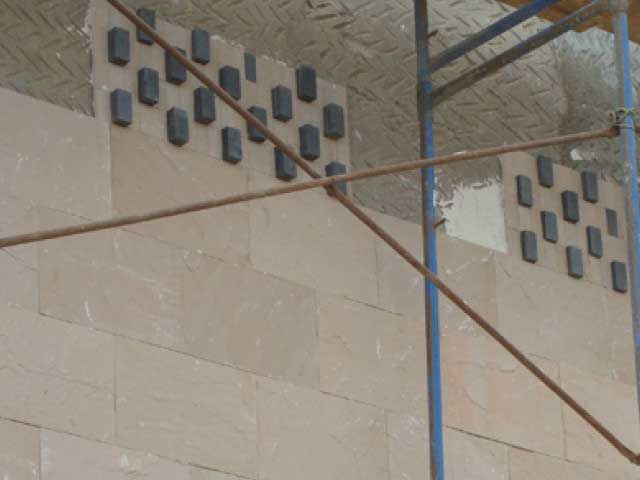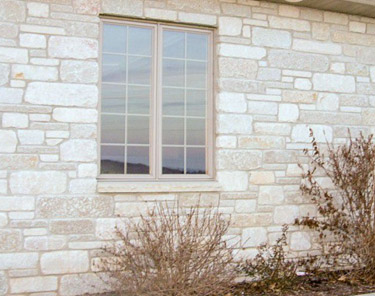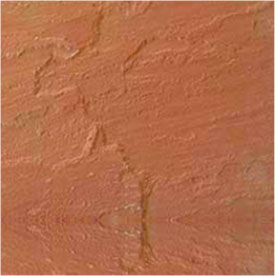Different Types of Stone For Exterior Applications
November 6, 2024 AdminWhen it comes to improving the aesthetic appeal and durability of your home’s façade, few materials can compete with natural stone’s timeless elegance and lasting strength. Exterior house stone has been a popular choice for decades, adorning the facades of architectural marvels, rural cottages, and modern homes alike.
Its ability to mix effortlessly with a variety of architectural styles, as well as its unparalleled sturdiness as a building material against the weather on home exteriors, has made it a perennial choice among homeowners and designers.
There are numerous types of natural stone and stone siding to consider when working on a house exterior project. In this post, we’ll take a look at the various forms of external house stone, including their rich history, the various stone material types accessible, and the compelling reasons why they’re still popular in modern building and remodeling projects.
Unmatched Charm of Exterior Stone Application
When it comes to external stone veneer, stone has long been used as a sign of strength and resistance throughout history. Its enduring presence in architectural wonders, monuments, and ordinary structures demonstrates its unwavering value. From the towering pyramids of Egypt to the stately castles of England and Continental Europe, stone has served as a medium for humanity to express its desire for permanence and security.
Stone’s continuing appeal stems from its strong physical characteristics and the symbolism it represents. Ancient civilizations understood stone’s intrinsic strength, attributed it to divine attributes, and used it to build sacred temples and tombs that have lasted the test of time. In modern history, the use of stone in public buildings, bridges, and landmarks indicates a society’s desire to leave a permanent legacy, a tribute to its strength, and an embodiment of its enduring values.

As we design and construct with stone today, it not only reminds us of our ties to the past and symbolizes our strength and resiliency, but the wide variety of stone types, colors, and finishes gives both designers and homeowners the freedom to express themselves in the homes, buildings, and structures they construct. Since fabrication technology has advanced over the past 30 years, installing natural stone in a veneer format for cladding walls is now less labor-intensive, making stone veneer panel systems and other forms of natural stone paneling even more accessible.
Different Types of Exterior Stone
The choice of stone can have a significant impact on your home’s durability and external appearance. Homeowners can choose from a variety of stone siding options that offer distinctive qualities, textures, and colors to fit their practical demands and design preferences. We’ll go into greater detail about some of the more common stone veneer siding options, such as granite, marble, slate, limestone, and sandstone.
It makes perfect sense to do your research because there are so many different kinds of stone to choose from. Depending on your preferred design, temperature, and level of care, you can choose the best solid stone siding for the outside of your house. When choosing, it’s critical to take into account the distinct character and durability that each variety offers.

1. Sandstone
Selecting sandstone for the external cladding of your house combines utility and natural beauty. A warm and inviting color palette for design is produced by the fascinating combination of earthy hues, distinctive textures, and durability found in sandstone, a sedimentary rock.
Sandstone’s aesthetic adaptability is one of its most alluring features. Sandstone, which comes in a variety of colors, including red, warm beige, golden yellow, and even cool grays, goes well with a variety of architectural designs. Any home gains character and appeal from its organic, inviting appearance and rustic vibe, which are evoked by its natural grain and texture.
Sandstone is known for its durability in addition to its aesthetic appeal. It is a great option for outdoor applications because of its resistance to weather and deterioration over time. With age, it acquires a patina that adds to its aesthetic appeal as it weathers beautifully.
A smart investment in both style and utility, adding sandstone to the outside of your house not only gives it classic beauty but also guarantees long-lasting protection and a link to nature.

2. Limestone
A common option for external cladding, limestone gives a home’s façade classic style and longevity. Limestone’s inherent beauty is one of its most notable qualities. Limestone’s wide range of hues, which includes warm earthy tones, creamy whites, and soft beiges, goes well with both modern and classic architectural designs. Its sleek texture finish conveys refinement and can give the outside of a house a feeling of grandeur.
Beyond its beauty, limestone is a popular material for home exteriors because of its remarkable endurance. It is a prudent investment because it can endure the most severe weather conditions and the test of time. Its attractiveness is further increased by its little maintenance needs.

3. Granite
An igneous rock that was produced deep inside the Earth’s crust, granite offers a remarkable combination of strong resistance and natural beauty. When most people think of granite, they typically think of worktops. However, granite is also used to make some of the most exquisite wall veneer and paving materials.
Granite’s aesthetic adaptability is one of its main draws. Granite comes in a wide range of hues and patterns, such as typical blacks, grays, pinks, and whites, and it can subtly improve the appearance of both contemporary and conventional architectural styles. Both polished surface goods and loose split face granite materials, like as Surface
Granite is known for its strength and durability in addition to its aesthetic appeal. It is a strong option for enduring severe weather, UV exposure, and temperature swings because of its remarkable resistance to the elements. Granite-clad exteriors are guaranteed to look beautiful for many years due to their natural robustness.

4. Marble
Another option for stone veneer cladding that is valued for its stunning beauty is marble. Marble’s visual appeal is its most remarkable quality. Marble is renowned for its exquisite veining patterns and breathtaking range of colors, which give any architectural style a luxurious appearance. Marble radiates luxury and sophistication, regardless of your preference for the striking richness of the colored variants or the timeless purity of white Carrara marble.
Although marble has historically been used indoors, its external applications are becoming more and more common. Marble can endure the weather and age gracefully with proper sealing and care, eventually acquiring a lovely patina. Its polished, smooth surface and unique veining patterns give your home’s façade a sense of grandeur and refinement.

5. Slate
Choosing slate for your home’s external cladding combines outstanding durability with a rustic beauty. Although many excellent slate solutions are available for cladding applications, slate is most likely most commonly thought of as a roofing material.
Slate’s distinctive and natural look is among its most alluring qualities. It is a favorite among fans of modern architecture because of its rough edges and textured surface, which give it a sophisticated yet rugged appearance. Slate comes in a variety of hues, such as rich greens, deep blues, and traditional grays. Its delicate texture gives the exterior of your house a dash of drama and personality.
Many varieties of slate are known for their longevity in addition to their aesthetic appeal. Certain types of slates are excellent for outside use since they can tolerate severe weather conditions.

6. Quartzite
Selecting quartzite for the external cladding of your house combines outstanding durability with contemporary style. Sandstone-derived quartzite is a metamorphic rock that creates an opulent and elegant appearance by fusing the durability of granite with the beauty of marble.
Quartzite is prized for its durability in addition to its aesthetic appeal. It is a great option for outdoor applications because of its exceptional resistance to weathering. Because of its natural hardness and abrasion resistance, quartzite will not be harmed by the weather and will continue to have a polished appearance for many years to come.
Because of its stain resistance and minimal maintenance needs, quartzite is a sensible option for homeowners seeking an elegant, modern exterior finish that blends durability and beauty.

7. Travertine
Choosing travertine for a home’s exterior adds a touch of informal elegance to the façade of your property. Sedimentary rock known as travertine is a great option for people looking for a sophisticated yet laid-back, natural atmosphere because of its unique porous texture and light color scheme.
The most alluring aspect of travertine is its porous surface, which lends it a distinctively textured look. Each stone’s inherent dips and troughs give the exterior depth and uniqueness, resulting in a work of art that showcases the artistry of nature. Its gentle, earthy tones of ivory, cream, and beige blend in perfectly with a variety of architectural types, including modern and Mediterranean houses.
The Conclusion
Like the architectural structures it adorns, the universe of exterior stone possibilities is as varied. Every variety of stone has a distinct personality and set of useful benefits, from the timeless elegance of granite to the rustic appeal of fieldstone. Whether you want a modern, classic, or rustic style, the first step is choose from the best natural stone exporters for your project.
Using external stone has several advantages beyond appearance. By providing resilience that withstands weather and time, these materials lower maintenance requirements and guarantee a long-lasting investment. Their inherent insulating qualities reduce utility bills and their negative effects on the environment by promoting energy efficiency.








